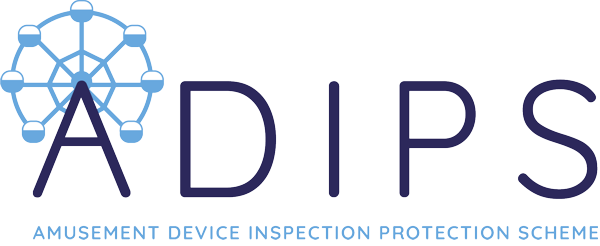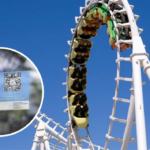HSE update at FJAC, 07 December 2023
HSE Inspector of Health and Safety David Kivlin gave an update attendees at the 07 December meeting of the Fairgrounds Joint Advisory Committee (FJAC) on a number of safety incidents and industry developments, plus reports on work undertaken in 2023.
Child death in trampoline explosion
The sentence hearing took place at Chelmsford Magistrates’ Court in November of Curt Johnson, 52, and his company, Johnsons Funfair Ltd. Johnson and his company had previously admitted two counts of breaching health and safety laws in relation to the death in 2018 of three-year-old Ava-May Littleboy.
The little girl from Suffolk suffered a fatal head injury after being thrown in the air when an sealed inflatable trampoline exploded at Gorleston-on-Sea, Norfolk. Johnson was jailed for six months, and his company was fined £20,000 and ordered to pay costs of £300,000 in total to HSE and Great Yarmouth Borough Council.
The FJAC heard that the device in question had been imported directly into the UK by Johnsons Funfair Ltd and lacked important documentation, including an ops manual. An IB was invited to inspect the device but postponed the inspection, asking for the paperwork, and advised Johnson against using the inflatable. Johnson continued to use the device without issuing the documents and before an inspection and certification was completed.
It is clear that Johnson was not following the guidance in HSG 175 on system safety and the design review process.
As a reminder, this is the guidance in HSG 175 entitled The operations manual and other information for the safe operation of an amusement device. The successful operation, maintenance and inspection of any amusement device will require access to information by different individuals at different times, for example:
- operators need information about the safe way to operate the device’s emergency procedures and the periodic checks required before operating the device
- maintenance fitters need information about inspection schedules to allow them to carry out safety checks
- IBs need access to design review information and previous in-service inspections
- regulatory inspectors (eg from HSE) can request sight of training and scheduled inspection records
- The controller must ensure that each amusement device has adequate information available to allow it to be safely operated, maintained and inspected.
Round-up devices
Work continues to address ongoing serious safety concerns with Round-Up devices. Specifically, HSE is assessing the risks associated with the ride, which uses centrifugal force to keep users on the device, when there is an unplanned loss of power. The Round-Up was one of several rides under scrutiny in HSE’s summer campaign of inspections. It is very much a case of watch this space. More news to follow.
Anchorage of inflatable devices on beaches
An inspection of an inflatable device in Great Yarmouth revealed insufficient anchorage. The anchorage system relied on pieces of buried wood that were not proven to control the risks of the device coming loose in strong winds. A prohibition notice was issued and discussions with the owner are ongoing.
HSE advises that 163kg concrete blocks or equivalent should be used for each anchorage point. Additional information is available on the HSE website here. On using inflatables on ground that isn’t suitable for stakes i.e., hard standing or sand, HSE advises thus:
If ground stakes cannot be used because of the surface (e.g tarmac) use ballast with anchor points each weighing at least 163 kg and with suitable fixings to attach the guy ropes. The inflatable should be tightly secured to the ground so that the wind cannot get under it and lift it up.
BS 14200:2023 Maintenance of Machinery
A new BSI standard on the maintenance of machinery was published In November. Although the user manuals for devices already give operators guidance on how to use the machinery safely, the new BS 14200:2023 focuses on the lifetime of the device and how it should be maintained.
An overview is provided by BSI here.
In short, BS 14200:2023 “applies to powered machinery, including all elements of the machinery (e.g. pipework, hoses, and vessels), where deterioration of the equipment performance could expose persons to a significant increase in risk to their health and safety”, says BSI.
It should be noted that the new Standard is intended to supplementspecific manufacturer instructions on maintenance and not replace them.
HSE advises that the standard, published in November, can be applied to the maintenance of machinery, including fairground rides, in the amusements industry.
HSE update on work in 2023
These are the headline figures from HSE’s schedule of work in 2023:
- 71 visits completed so far this year – 100 to be completed by end of year
- 29 resulted in enforcement action – just over 40% of those sites visited, representing a rise of approximately 5% on 2022
- Enforcements were issued on the following: Twist rides (six), high speed (five), log flume (one), integrated frogs (five), Star Flyers (four) and general electrical issues (six)
- Three improvement notices were issued, five prohibition notices and notification of contravention letters as part of FFI (fee for intervention)
- Issues included electrical safety breaches, missing bulbs, faulty restraint systems and incorrectly terminated cabling
Work plan for 2024
It is planned that there will be 100 visits in 2024 across the UK, to a mix of fixed and travelling sites. Issues of focus will include:
- Electrical controls and high speed rides
- Round-ups
- Tagedas (a new piece of work looking at construction integrity of sub-frame)
- General electrical safety
- Miamis, Twists, Crazy Frogs
- Safe working practices on fixed sites for people entering prohibited areas
- Further guidance from HSE on foreseeability and taking reasonably practicable measures to manage risks
HSG 175 review
HSE is proceeding with a review of the safety and health guidance for the amusements industry. In January, David Kivlin will be sending invitation to join work groups, inviting representations from across the board, including inspection bodies and operators.
Initial meetings will be held in late January with information gathered to inform draft guidance in March. HSE will take on board comments – plus things HSE considers require revision – with the aim of formulating text and meeting again in mid-July to discussion those revisions to hone it down.
There will then be an ongoing iterative process from mid-July until a text is finalised for comment towards the end of 2024. It is hoped the new revised guidance will be published before the middle of 2025.
Recent Posts
Archives
- April 2024
- March 2024
- December 2023
- October 2023
- August 2023
- July 2023
- May 2023
- March 2023
- February 2023
- January 2023
- December 2022
- April 2021
- April 2020
- March 2019
- September 2018
- August 2018
- October 2017
- September 2017
- May 2017
- April 2017
- March 2017
- December 2016
- September 2016
- August 2016
- June 2016
- February 2016
- August 2015
- July 2015
- May 2015
- April 2015
- February 2015
- January 2015
- September 2014
- August 2014
- March 2014
- January 2014
- December 2013
- November 2013
- October 2013
- September 2013
- August 2013
- July 2013
- June 2013
- May 2013
- February 2013
- December 2012
- January 2012
- January 2011





